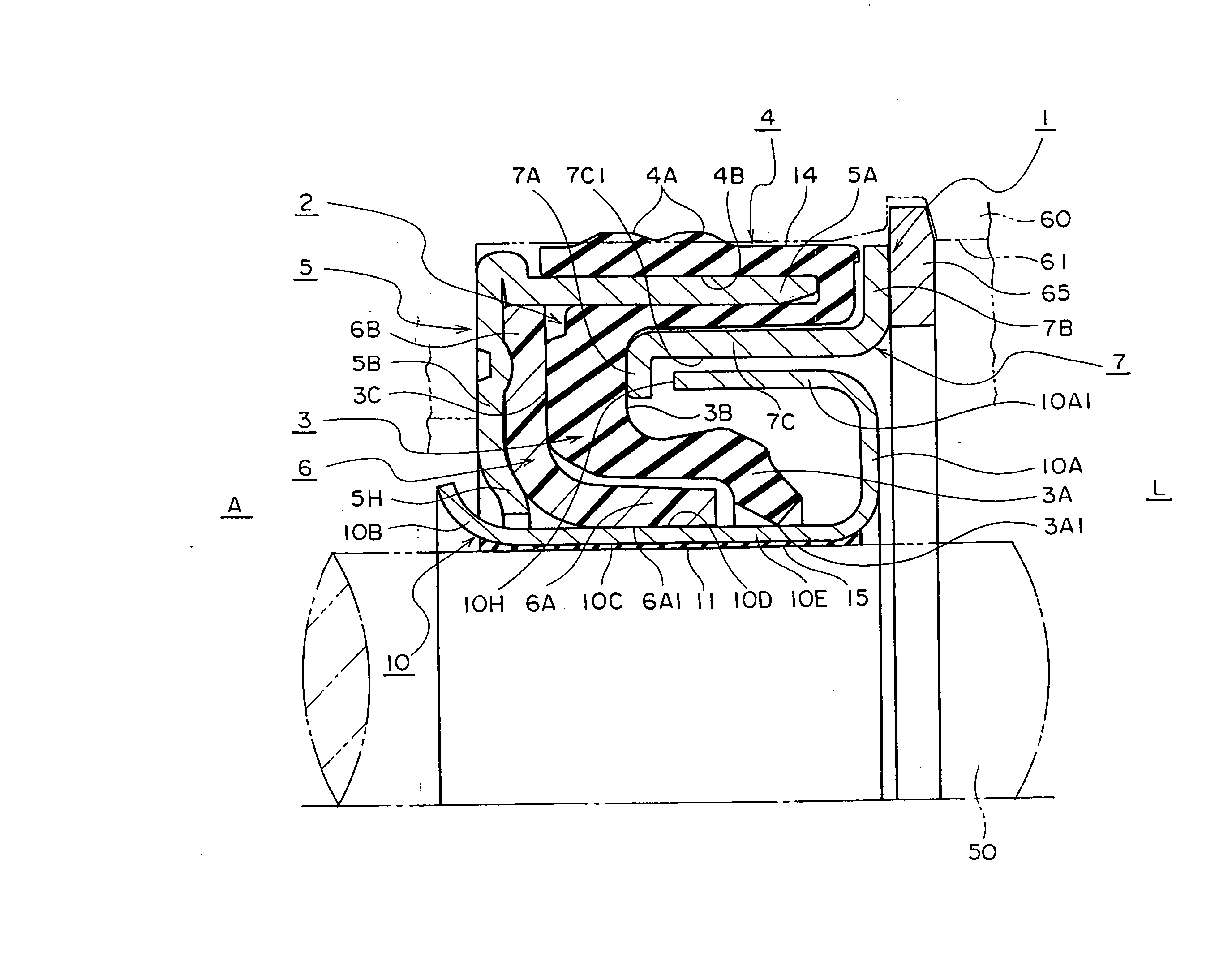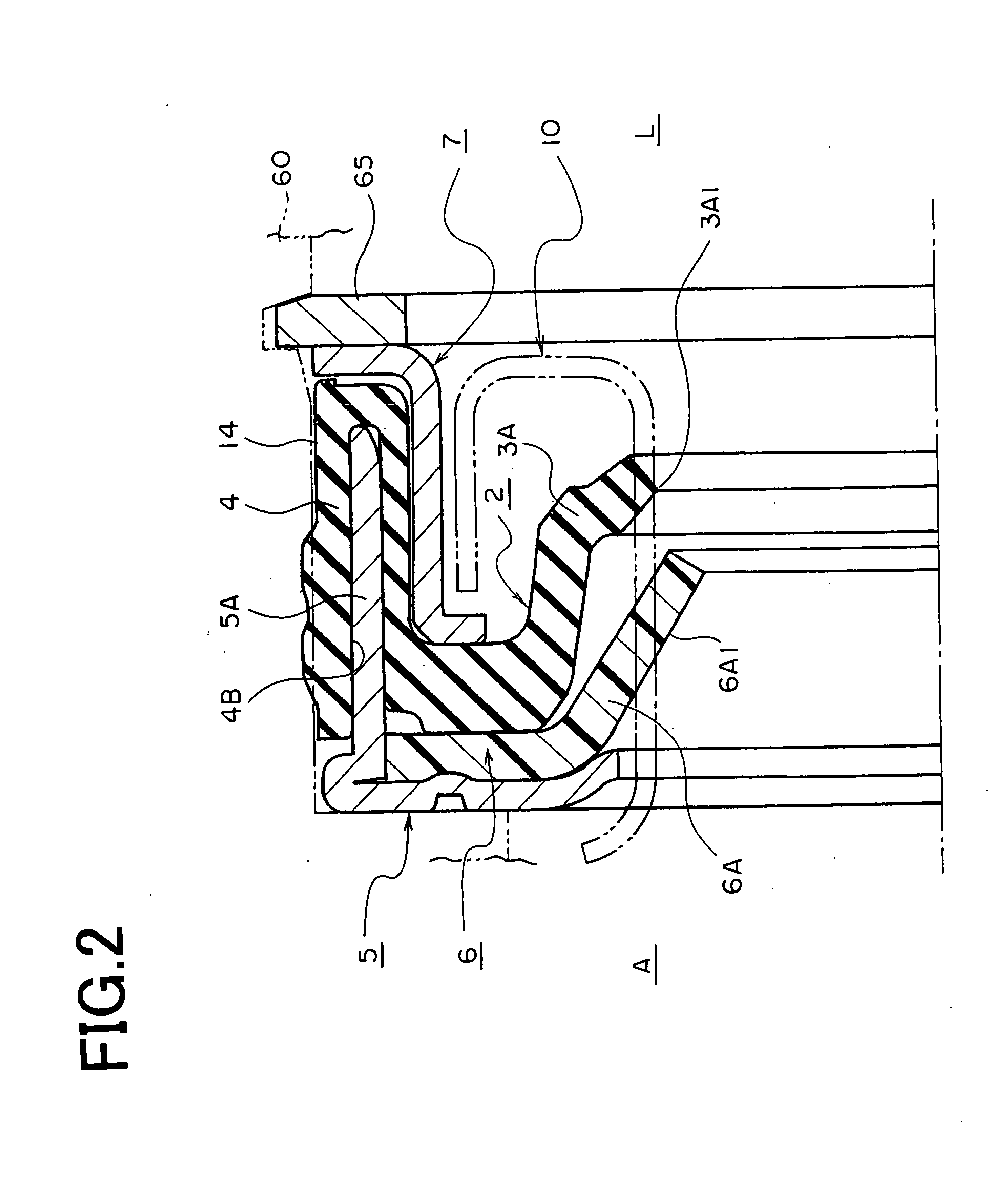Shaft Seal Device
a technology of shaft seal and seal lips, which is applied in the direction of engine seals, mechanical equipment, engine components, etc., can solve the problems of reducing the flexibility of choice, affecting the sealing effect, so as to achieve easy separation, increase the freedom of choice, and good adhesive
- Summary
- Abstract
- Description
- Claims
- Application Information
AI Technical Summary
Benefits of technology
Problems solved by technology
Method used
Image
Examples
embodiment 1
[0016] First, a shaft seal device of the embodiment 1 related to the present invention will be described. FIG. 1 shows a cross sectional view of a half portion of a shaft seal device 1. In FIG. 1, a rotary shaft 50 is mounted in a bearing bore 61 in a housing 60. A seal sleeve 10 fitted to the rotary shaft 50 is fabricated in a cylindrical form from a stainless steel sheet. Both ends of the seal sleeve 10 are bent radially outward. A first stopper 10A located in one of the inflected ends is bent to form L-shape cross section from the end and is structured so as to define U-shape cross section including a part of the distal end portion of the cylindrical portion 10E in a surrounding manner relative to an annular lip 3A. That is, the first stopper 10A extends from one end portion of the cylindrical portion 10E and defines a partitioning portion 10A1 in tubular design extending to the atmospheric A side so as to surround a first seal face 33A1 of the annular lip portion 3A. Preferably ...
embodiment 2
[0026] Next, a shaft seal device 1 of the embodiment 2 related to the present invention will be described. FIG. 3 is a cross sectional view of a half portion of the shaft seal device 1 related to the embodiment 2. What makes FIG. 3 different from FIG. 1 is that the urging portion 7A of the support annulus 7 is extended in L-shape so as to support the annular lip portion 3A such that the annular lip portion 3A does not expand radially outward. The end surface of the urging portion 7A is structured in a tooth form and fittingly mates with a stopper ring 8 which is made of rubber or resin material in detachable a manner. The stopper ring 8 can be brought to make a light contact with the inner circumferential surface 10M of the partitioning portion 10A1 so as to prevent impurities included in the sealed fluid from coming into the first seal face 3A1 side. Also the stopper ring 8 provides a support for restraining vibrations of the inner circumferential surface 10M during rotation. There...
PUM
 Login to View More
Login to View More Abstract
Description
Claims
Application Information
 Login to View More
Login to View More - R&D
- Intellectual Property
- Life Sciences
- Materials
- Tech Scout
- Unparalleled Data Quality
- Higher Quality Content
- 60% Fewer Hallucinations
Browse by: Latest US Patents, China's latest patents, Technical Efficacy Thesaurus, Application Domain, Technology Topic, Popular Technical Reports.
© 2025 PatSnap. All rights reserved.Legal|Privacy policy|Modern Slavery Act Transparency Statement|Sitemap|About US| Contact US: help@patsnap.com



